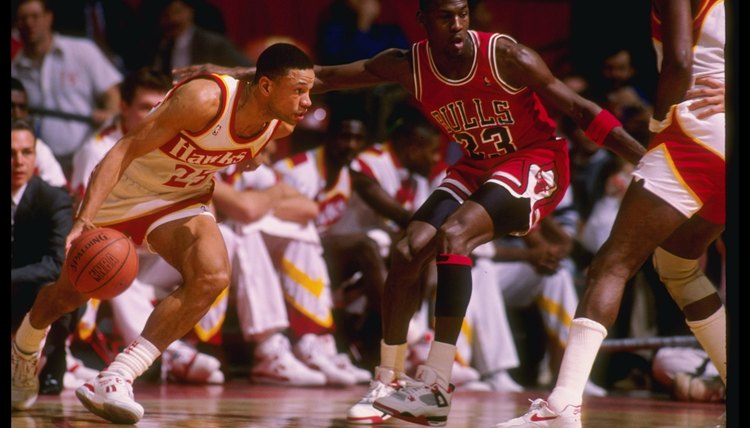Basketball Defense Guide: Inside 5 Types of Defenses

As a beginner, some of the first basketball drills you do focus on fundamentals like lay-ups and free throws; as basketball players get older, however, the ability to play defense is often the difference between being on the court and sitting on the bench.
In order for a basketball player to be a good defensive player, they must have a strong defensive stance, good footwork and understand different defensive strategies to prevent the opposing team from scoring the ball as much as possible. Many of those defensive strategies often revolve around the type of defense that the coach calls for.
In the game of basketball there are hundreds of different team defenses, but here we will focus on five simple types of defenses that are seen everywhere, from high school to the NBA. Those five basketball defenses are:
- Basic man-to-man
- Switching man-to-man
- Sagging man-to-man
- Zone defense: 2-1-2, 2-3, 1-2-2 zone
- Press defense: half-court, full court
Basic man-to-man
A basic man-to-man defense calls for each defender to match up with one offensive player, typically the offensive player that plays the same position as them. Each defender is tasked with the following:
- Playing aggressive on-ball defense when their man has the ball
- Positioning themselves in the passing lane when their man does not have the ball, looking for deflections and steals
- Box out their man when a shot goes up
WATCH: NBA head coach Dwayne Casey runs through man-to-man defensive drills
Switching man-to-man
All of the individual principles of a basic man-to-man defense, like defensive positioning and close outs, continue to apply when playing a switching man-to-man. However, there is one key difference:
- When an offensive player sets a screen, the player who was defending the screener switches to defend the man that the screened defender was guarding, and the defensive player who got screened takes responsibility of the screener- a “switch"
Switching screens has become the focus of almost all defensive drills on all levels of basketball and especially the NBA, as basketball coaches recognize just how much pick-and-roll offenses dominate.
Sagging man-to-man
In a sagging man-to-man, defenders drop back from the offensive player they are guarding. This kind of defense is usually seen when the offensive team struggles with jump shots and is more of a threat getting lay-ups and shots inside the top of the key. In this defense, it is much easier for off-ball defenders to help the primary defender if the ball handler gets past him.

Zone Defense
If your team is playing zone, you guard a particular area instead of a particular man. When an offensive player enters your zone, it is your responsibility to pick him up. When he leaves your zone, your teammate who patrols that zone picks him up. Zone defenses are useful when the opposition shoots poorly from the outside, or when the opposition has a quickness edge and can blow by your defenders on the dribble.
There are several variations of zone defenses, but the main ones are a 2-1-2, a 2-3, and a 1-2-2.
- A 2-1-2 zone defense consists of two defenders at the top, one defender in the middle near the free throw line, and two defenders at the bottom, usually around the baseline
- A 2-3 zone defense consists of two defenders at the top and three along bottom
- A 1-2-2 zone defense consists of one defender up top who usually follows around the point guard or dribbler bringing the ball up the floor, two defenders in the middle who look for traps along the sideline, and two defenders at the bottom
Many coaches prefer the man-to-man defense since it generally is a more aggressive style. However, the legendary John Wooden, who coached UCLA to an unmatched 10 National Collegiate Athletic Conference championships, used both man-to-man and a ferocious full court zone trap. A team that plays both man-to-man and zone defenses effectively is well-suited to guard against any type of offense.
Press Defenses: Half-Court Press and Full-Court Press
A half-court press means that as soon as the ball handler passes the half-court or center line, the defender will press up on them and try to force a bad pass that leads to a turnover and fast break.
A full-court press means that a defense will set up in either a full-court extended zone if they are in a zone defense or each defender will pick up their man before the ball is passed in on the baseline if they are in a basic man-to-man defense.
References
Writer Bio
Jim Thomas has been a freelance writer since 1978. He wrote a book about professional golfers and has written magazine articles about sports, politics, legal issues, travel and business for national and Northwest publications. He received a Juris Doctor from Duke Law School and a Bachelor of Science in political science from Whitman College.
